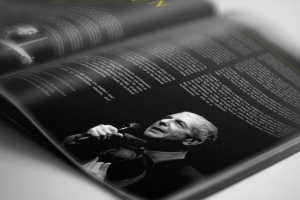How Light Travels
The Fundamentals
Let There Be Light!
Lesson 2: The Speed of Light
- What Moves Light
- Electromagnetic (EM) Fields
- The Anatomy of Light
In this lesson, you will learn what light is, where it comes from, and why it becomes a spectrum when it’s exposed to a prism.
What Moves Light?
We all know that light moves, but it’s not like it has little, tiny feet. So what’s moving it? When you consider how fast sunlight travels to reach the Earth, it makes you wonder how it moves at all. That it’s traversing the universe at 186,000 miles per second is one of the real mysteries of science, because to us it’s just there, all the time. Every day. Light doesn’t feel like it’s traveling to get here. It feels like it was always here. And sunshine feels good! It makes us happy. We miss it when it’s gone and we’re happy when it returns. That’s not just a subjective assessment. There’s a scientific reason for that. Light affects our mood.
To understand how it’s performing these celestial feats of magic, imagine a microscope that would let us look at light up close. It would be easy to think that just because light can only move in a straight line, that light itself is straight, like a stick of dry spaghetti. But we would be wrong. Even though light travels in a straight line, in appearance it actually looks more like a Ramen noodle than a stick of dry spaghetti. It’s wavy. Light waves vibrate. And that vibration causes a beam of light to radiate away from its source. Think of a tuning fork. The fork is the source of the vibration. You can’t see it vibrate because it’s moving back and forth faster than your eye can see. But you can definitely hear it, and you can feel it vibrating. Every kink in that Ramen noodle is the vibration…the back and forth of the tuning fork. But what’s causing the kinks? The kinks are created by an electromagnetic (EM) field.
Electromagnetic (EM) Fields
Electromagnetic fields are generated by the spinning of large planetary bodies like the Earth or the Sun. The molten core of the Earth spins as the Earth spins, and the friction it creates as it spins generates the Earth’s magnetic field. If you’re ever seen the Aurora Borealis, you’ve seen the Earth’s magnetic field at work. That magnetic field is what causes the aurora to ripple in waves across the sky. Electrically-charged particles are ejected from the sun when it makes those horrible, scary sun farts…technically called “solar mass ejections” or “solar flares”. The really big ones interact with the magnetosphere surrounding the Earth, creating that spectacular light show. But electricity and magnetism also work together to create what we perceive as “color”.
I know…who cares? Well if you’re trying to understand color, YOU do, because that oscillation back and forth as these two fields pull on each other takes the physical form of a “wave”. Waves are the vibration. That’s what’s radiating outward from the source, whether it’s a tuning fork or a sun. The waves are what make light move. The speed of that oscillation back and forth is what’s causing light to move so fast. And here’s the cool part…the steady oscillation of that wave and the speed at which it’s vibrating is what’s causing the sunlight that seems golden or white to our naked eye to band into the colors that make up the spectrum.
But how is the EM field doing that? EM fields are actually two separate entities…electric fields and magnetic fields. Electric fields create magnetic fields, and magnetic fields create electric fields. Their relationship to each other is identical to the relationship we have with trees. The tree exhales the oxygen we breathe. In turn, we exhale the carbon dioxide the tree breathes. We each need what the other has in order to exist.
Oscillation
That back and forth between trees and people is just like the symbiotic back and forth going on between electric and magnetic fields. They exist in a never-ending cycle of motion back and forth called “oscillation”. That constant back and forth propels the waves into forward motion. The speed of that back and forth causes the waves to move really super fast. Like the tuning fork, the oscillation is too fast for our naked eye to perceive. But like the water droplets in the air that create rainbows in nature, the glass of a prism does the same thing. As the light passes through the glass, it let’s us break light waves into the anatomical parts we call “color“. Why are these bands different colors? The short answer is that not all waves are equal. The longer answer is the subject of our next lesson: “Wave Dynamics”.





